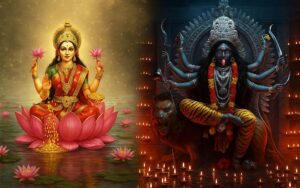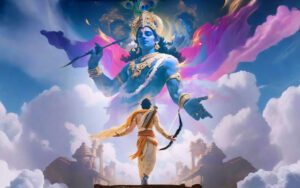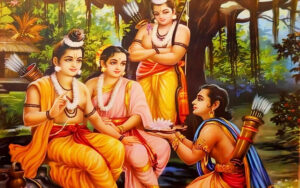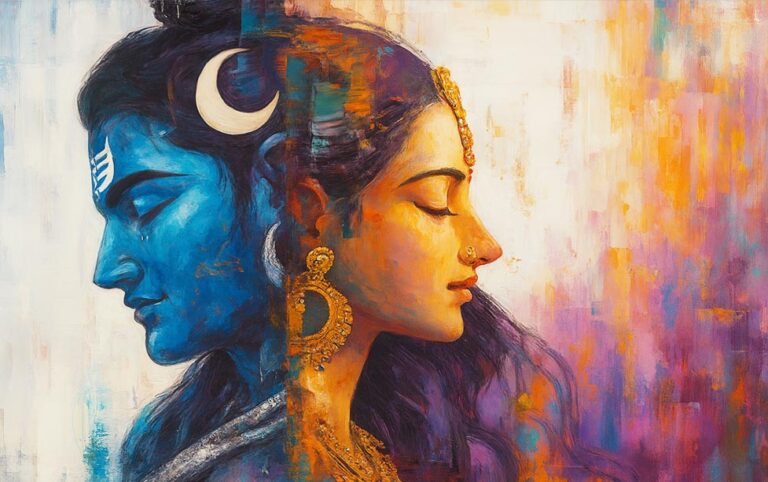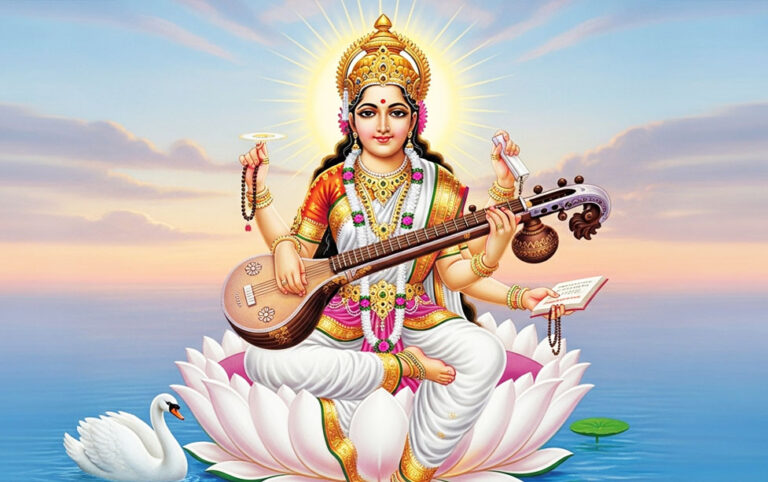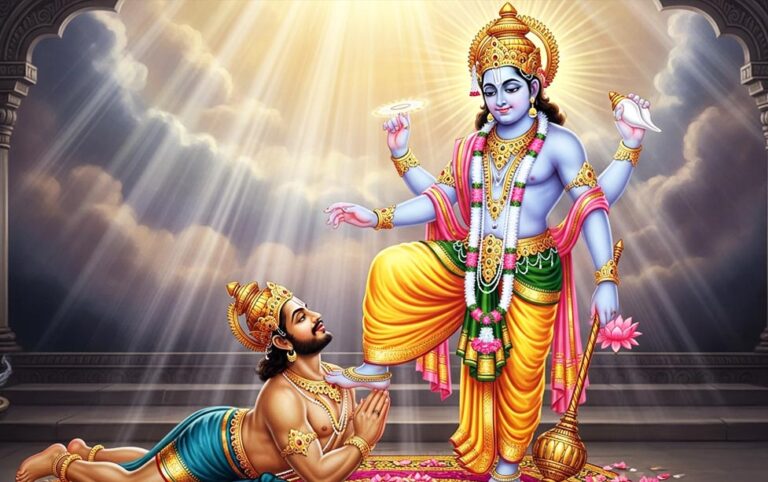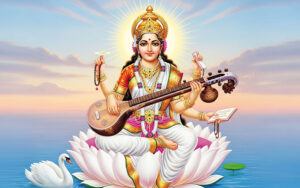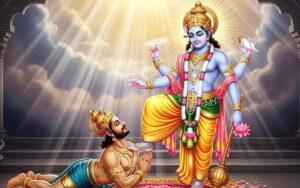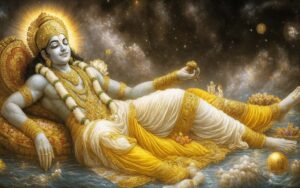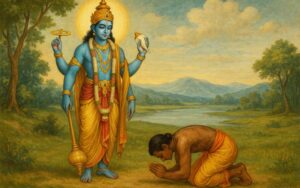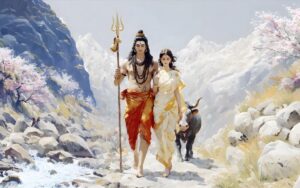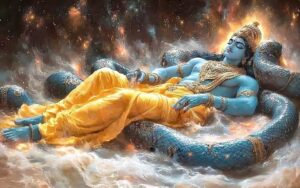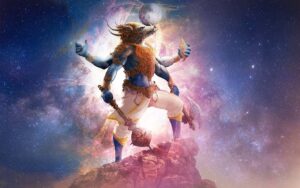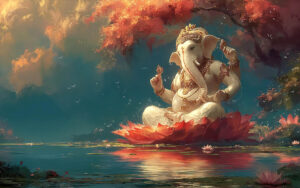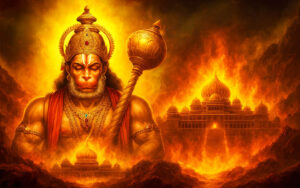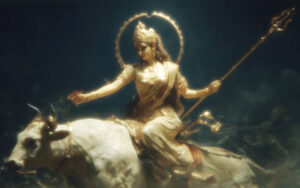No time for reading the blog? Give it a listen on Spotify.

In the timeless rhythm of creation and dissolution, Lord Vishnu’s avatars reveal the secret of divine detachment — the art of acting with purpose while remaining untouched by desire.
In the vast ocean of Hindu philosophy, Lord Vishnu stands as the eternal preserver — the quiet force that sustains creation, protects order, and restores balance whenever chaos rises. Yet, beneath this divine guardianship lies a profound mystery: Vishnu acts without attachment, moves without desire, and creates without possession.
From age to age, he descends into the mortal realm as Rama, Krishna, Varaha, Narasimha, and many other forms — each born out of compassion, not compulsion. When dharma trembles and darkness spreads, Vishnu intervenes not for personal gain, but for the harmony of the cosmos. His every incarnation is an act of divine participation without entanglement, of love without bondage, and power without ego.
This divine detachment is not cold indifference — it is perfect awareness. It shows that one can live fully in the world, fulfilling every duty and emotion, yet remain inwardly free. In an age where our minds are caught between ambition and anxiety, Vishnu’s timeless balance offers a luminous lesson: to act, to serve, to love — and to let go.
The Meaning of Divine Detachment
Detachment (vairagya) in Sanatana Dharma thought does not mean apathy. It means clarity amidst involvement. Performing one’s role with sincerity but without the chains of expectation.
Vishnu embodies this principle flawlessly. Whether he protects the universe or walks among mortals, his actions flow from cosmic purpose, not personal desire. He shows that true mastery is not withdrawal, but balance. Being in the world yet untouched by it.
Rama: Duty Without Desire
In the Ramayana, Lord Rama’s life is the highest expression of disciplined detachment. He upholds dharma even when destiny tests his heart — leaving the comforts of the palace, embracing exile, and fighting for righteousness.
When victory comes, he celebrates not with pride but serenity. Rama’s calm grace shows that detachment is the courage to do what’s right, even when the heart aches.
Lesson: Detachment does not weaken love — it sanctifies it.
Krishna: Detached in the Midst of the World
In the Mahabharata, Lord Krishna lives among kings and warriors yet remains beyond illusion. To Arjuna, he reveals the essence of detachment:
“Perform your duty, O Arjuna, abandoning all attachment to success and failure.” (Bhagavad Gita 2.47)
Krishna’s smile, even in the midst of war, is the smile of one who knows the truth that life is a divine play, not a personal battle. He acts not for reward, but for the joy of aligning with dharma.
Lesson: Detachment is the bridge between action and peace.
Varaha and Narasimha: The Power of Purpose
As Varaha, Vishnu lifts the Earth (Bhudevi) from cosmic waters; as Narasimha, he destroys tyranny to restore faith.
These fierce acts are not born of anger but of cosmic precision. Each avatar arises only when needed and dissolves when balance returns. Vishnu never clings to form or fame. His detachment transforms destruction into renewal.
Lesson: Detachment gives power its direction and purity.
The Cosmic Perspective: Life as Lila
All creation is Lila, the divine play. Vishnu’s avatars remind us that every joy, sorrow, success, and failure are scenes in the grand drama of existence.
We must play our parts well, but never forget we are not the playwright, only the actors. Behind every action lies the witness, the divine consciousness, eternal and free.
Lesson: Life becomes peaceful when we realize it’s sacred play, not permanent possession.
Modern Reflection: Living the Way of Vishnu
In today’s world, where constant striving defines worth, Vishnu’s detachment is a spiritual antidote.
Work with full intent, but not with obsession.
Love deeply, but without losing your center.
Protect and serve, but without pride in your power.
Detachment is not the absence of emotion. It is the mastery of emotion. It allows us to engage fully, yet remain serene when life shifts its rhythm.
Through his countless incarnations, Vishnu teaches the same cosmic truth: act without ownership, love without fear, and serve without expectation.
To live like Vishnu is to participate in the dance of life without forgetting the stillness at its center.
In that stillness lies liberation — the freedom to be in the world, yet beyond it.




